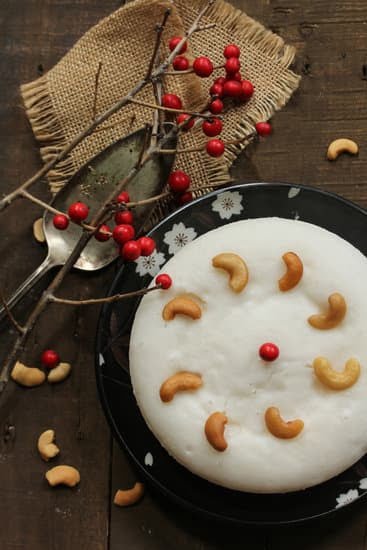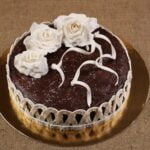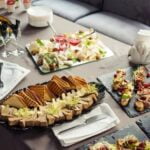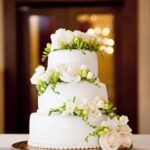Cake decorating is an art form that allows individuals to showcase their creativity and bring beauty to any occasion. And at the heart of cake decoration lies icing, a versatile medium that can transform a simple cake into a stunning masterpiece.
In this article, we will explore the world of cake decorating ideas with icing, from basic techniques for beginners to intricate designs and edible artwork. Whether you’re a novice or an experienced baker, these ideas will inspire you to take your cake decorating skills to the next level and unleash your creative potential.
Icing is much more than just a decorative element on a cake – it plays an essential role in enhancing its taste, texture, and overall appeal. By understanding different types of icing such as buttercream, royal icing, and fondant, you’ll be able to choose the right one for each unique design. We will provide step-by-step guides so that even beginners can achieve smooth and flawless icing on their cakes.
If you’re looking for easy yet impressive DIY cake designs using icing, look no further. We will share simple techniques and tips that beginners can try at home to create stunning results. From elegant designs to fun and playful ones, there’s something for everyone. Additionally, we will highlight the top trending cake decorating ideas with icing so you can stay up-to-date with the latest techniques that are wowing people everywhere.
So whether you want to master piping techniques for intricate designs or explore creative ways to add texture and dimension to your cakes, this article is your go-to guide for all things related to cake decorating with icing. With each section covering different aspects of this art form – from color palettes to embellishments – you’ll be equipped with the knowledge and inspiration needed to create your own icing masterpieces.
So let’s dive in and unleash our creativity with icing in cake decorating.
Basic Icing Techniques for Beginners
Introduction:
When it comes to cake decorating, icing plays a crucial role in adding beauty and creativity to any design. Whether you’re a beginner or an experienced baker, mastering the art of icing techniques is essential for achieving smooth and flawless results. In this section, we will explore different types of icing, such as buttercream, royal icing, and fondant, and provide a step-by-step guide to help beginners achieve professional-looking icing on their cakes.
Types of Icing:
- Buttercream: This classic and versatile icing is made with butter or shortening blended with powdered sugar and flavorings. It has a rich and creamy texture that is perfect for covering cakes, piping borders and decorations, and creating smooth surfaces.
- Royal Icing: Known for its hardening properties, royal icing is made from egg whites or meringue powder mixed with powdered sugar. It dries firm, making it ideal for intricate designs like piped flowers, lace work, and delicate details.
- Fondant: Made from sugar, water, gelatin or marshmallows, fondant is a pliable dough-like icing used to cover cakes entirely for a sleek finish. It can also be rolled out thinly to create decorative accents like bows, ribbons, and figurines.
Step-by-Step Guide:
- Prepare your cake: Level the top of the cake with a serrated knife to create an even surface.
- Crumb coat: Apply a thin layer of buttercream or ganache over the entire cake to prevent crumbs from getting mixed into the final layer of icing.
- Apply the base coat: Using an offset spatula or a bench scraper, apply a thick layer of buttercream or fondant over the crumb coat. Spread it evenly starting from the top and working your way down to the sides until the entire cake is covered.
- Smooth the surface: Use a smoothing tool or Viva paper towel to gently smooth the surface of the icing, removing any air bubbles or imperfections.
- Borders and decorations: Use a piping bag fitted with your desired tip (star, round, leaf) to pipe borders or add decorative elements like flowers or writing.
By following these basic steps and experimenting with different icing types, beginners can achieve beautifully decorated cakes with ease. With practice, you’ll be able to create intricate designs and personalized creations that will leave everyone in awe of your cake decorating skills.
Easy DIY Cake Designs Using Icing
When it comes to cake decorating, using icing is a fantastic way to showcase your creativity and create stunning edible works of art. Whether you’re a beginner or an experienced baker, there are plenty of easy DIY cake designs that you can try at home using icing. With a few simple techniques and some imagination, you can transform a plain cake into a masterpiece that will impress your family and friends.
One popular technique for beginners is the use of buttercream icing. Buttercream is a smooth and creamy icing that is perfect for creating simple yet stunning designs. You can use different colors of buttercream to pipe borders, rosettes, or even write messages on your cake. If you want to take it up a notch, you can also try the ombre effect by blending two or more colors together for a beautiful gradient look.
Another basic technique for DIY cake designs is royal icing. This type of icing dries hard and is great for creating intricate details and decorations on your cakes. With royal icing, you can pipe delicate lace patterns, make flowers and leaves, or even write in calligraphy. By using different piping tips, you can achieve various effects such as dots, lines, and ruffles.
If you prefer a more sophisticated look for your cake designs, fondant icing is the way to go. Fondant provides a smooth canvas that allows you to create elaborate shapes and designs with ease. You can cover your entire cake with fondant to achieve a flawless finish or use it to make figurines, bows, or other decorative elements.
To ensure professional-looking results with these DIY cake designs using icing, here are some helpful tips:
- Start with a crumb coat: Before adding any decorative elements to your cake, apply a thin layer of buttercream frosting called a crumb coat. This helps seal in any loose crumbs on the surface and provides a smooth base for the final layer of icing.
- Use an offset spatula: An offset spatula is a handy tool for spreading icing smoothly and evenly onto the cake. It allows you to achieve a seamless finish without disturbing the crumb coat.
- Keep your tools and hands clean: Cleanliness is key when working with icing. Make sure your piping tips, spatulas, and hands are clean before starting. Any unwanted residue or debris can affect the final look of your design.
With these techniques and tips in mind, you can unleash your creativity and begin creating beautiful DIY cake designs using icing. Remember to start simple and gradually challenge yourself as you gain more experience. The possibilities are endless, so have fun experimenting and see what masterpiece you can create.
Top Trending Cake Decorating Ideas with Icing
Current Trends in Cake Decorating
The world of cake decorating is constantly evolving, with new trends emerging every year. From whimsical designs to elegant masterpieces, there is a wide range of cake decorating ideas with icing that are currently trending. One of the top trends in cake decoration is the use of watercolor techniques with icing.
This involves blending different shades of icing to create a beautiful and unique watercolor effect on the cake. Another popular trend is geometric patterns, where icing is used to create intricate and symmetrical designs on the cake’s surface. Metallic accents, such as gold or silver dust, are also being used to add a touch of glamour and sophistication to cakes.
Innovative Techniques and Ideas
In addition to these current trends, there are plenty of other innovative ideas for cake decorating with icing. For example, drip cakes have gained immense popularity in recent years. This technique involves pouring melted chocolate or ganache over the top edge of a cake so that it drips down the sides, creating a visually stunning effect.
Another creative idea is “hidden surprise” cakes, where an unexpected design or picture is revealed when the cake is cut open. This can be achieved by carefully carving out shapes or using colored icing layers.
Themed Cakes for Special Occasions
Cake decorators are also using icing to create themed cakes that are perfect for special occasions like birthdays, weddings, and holidays. For example, for children’s birthday parties, decorators may use icing to create adorable animal or cartoon character designs. Wedding cakes often feature intricate lace piping or delicate sugar flowers made from icing. During holiday seasons like Christmas or Halloween, festive decorations such as snowflakes or spooky creatures can be piped onto cakes using various techniques.
Whether you’re looking for unique designs or traditional styles with a modern twist, exploring the top trending ideas in cake decorating with icing can be a great way to inspire your creativity. From using watercolor techniques to creating hidden surprise cakes, there is no limit to the possibilities that icing can offer in creating stunning and memorable cake designs.
So, don’t be afraid to experiment, have fun, and let your imagination soar as you embark on the adventure of cake decorating with icing.
Icing Piping Techniques for Intricate Designs
Mastering the Art of Piping Techniques
One of the most important skills in cake decorating with icing is mastering the art of piping. Piping involves using a pastry bag and various piping tips to create intricate designs on cakes. Whether you’re a beginner or an experienced decorator, learning different piping techniques can help you take your cake decorating skills to the next level.
Different Piping Tips and Their Uses
There are numerous piping tips available that can create different effects and designs on cakes. Some common types of piping tips include round, star, leaf, petal, and basketweave tips. Each tip has its own unique shape and size, allowing decorators to achieve various patterns and textures.
For delicate floral designs, petal tips are ideal as they create realistic flower petals when used with buttercream icing. Round tips can be used for writing or creating borders, while star tips are great for creating rosettes or adding texture to a cake’s surface. Experimenting with different piping tips will give you a better understanding of their uses and enable you to unleash your creativity.
Tips for Achieving Beautiful Piping Designs
To achieve beautiful piping designs, it’s crucial to have the right consistency of icing. Royal icing is commonly used for intricate piping as it dries hard and holds its shape well. Buttercream icing can also be used, but it may require some practice to achieve clean and flawless results.
Before starting to pipe, it’s important to get comfortable holding the pastry bag properly. Hold the bag close to the tip with one hand while using your other hand to gently guide the movement. Applying consistent pressure is key – too much pressure will cause thick lines or burst seams, while too little pressure will result in thin and uneven lines.
Practice on a smooth surface before moving onto your cake to gain confidence in your skills. Start with simple designs and work your way up to more intricate ones. Remember that practice makes perfect, and with time and patience, you’ll be able to create stunning piping designs on your cakes. So go ahead and let your imagination run wild.
Creative Ways to Use Icing for Texture and Dimension
Icing is not only a tool for adding color and flavor to cakes, but it can also be used to create texture and dimension in cake designs. By using various icing techniques, decorators can elevate their creations to a whole new level of artistry. In this section, we will explore different creative ways to use icing for texture and dimension, showcasing examples and providing tips on how to achieve these effects.
One technique that adds texture and depth to cake designs is brush embroidery. This technique involves using a thin consistency of royal icing or buttercream and a soft brush to create delicate, embroidered-like patterns on the surface of the cake. By brushing the icing onto the cake in gentle strokes, decorators can achieve a beautiful textured effect that resembles delicate lace or fabric.
Another way to add texture using icing is through lace piping. Lace piping involves using a fine piping tip and royal icing or buttercream to pipe intricate lace-like patterns directly onto the cake. This technique requires precision and practice but can result in stunningly elegant designs that add a touch of sophistication to any cake.
Buttercream flowers are another popular technique for creating both texture and dimension in cake decorating. By using different piping tips and varying pressure when applying the icing, decorators can create realistic-looking flowers with petals that stand out from the surface of the cake. These buttercream flowers can be made in various colors and sizes, allowing decorators plenty of room for creativity when designing their cakes.
| Texture Techniques | Description |
|---|---|
| Brush Embroidery | A technique that involves using a soft brush with thin royal icing or buttercream to create delicate embroidered patterns on the cake. |
| Lace Piping | A technique where fine royal icing or buttercream is piped onto the cake to create intricate lace-like patterns. |
| Buttercream Flowers | Using different piping tips and pressure, decorators can create realistic-looking flowers that add both texture and dimension to their cakes. |
Icing as a Canvas
Cake decorating with icing goes beyond simply creating a delicious treat; it can become a form of edible artwork and sculptures. The possibilities are endless when it comes to using icing as a canvas for creativity, and the results can be truly awe-inspiring. In this section, we will explore how cake decorators have taken icing to the next level, elevating it into an art form.
One way that icing can be transformed into edible artwork is through intricate piping designs. Skilled decorators use piping bags and various tips to create stunning patterns and shapes on cakes. From delicate lace piping to bold, elegant scrollwork, these designs showcase the precision and talent of the decorator. With practice and patience, anyone can learn these techniques and turn their cakes into works of art.
Another method of transforming icing into art is by creating edible sculptures. Talented cake decorators can shape icing into lifelike figures or objects, turning a plain cake into a three-dimensional masterpiece. Whether it’s sculpting animals, flowers, or entire scenes, these creations are sure to impress both visually and taste-wise. Edible sculptures not only add visual appeal but also enhance the overall theme or message behind the cake.
In addition to piping and sculpting, skilled decorators also utilize painting techniques to create edible masterpieces. By using thin brushes and vibrant food coloring mixed with icing, they can produce detailed brushwork or even replicate famous paintings onto cakes. These painted creations allow decorators to express their artistic visions on a completely different medium while still tantalizing taste buds.
Icing Color Palettes
Choosing the perfect color palette is essential in cake decoration as it sets the tone and mood for the entire design. With icing, you have a wide range of colors to choose from, allowing you to create harmonious and visually stunning cake creations. Here are some tips on selecting the perfect hues for your icing:
- Know the psychology of color: Different colors evoke different emotions and can communicate various messages. For example, warm colors like reds, oranges, and yellows are known for their energetic and passionate vibes, while cool colors like blues and purples create a calm and soothing atmosphere. Consider the occasion or theme of your cake design and select colors that align with the desired mood.
- Consider the color wheel: The color wheel is a useful tool when it comes to choosing complementary or contrasting colors for your icing. Complementary colors are opposite each other on the color wheel (e.g., red and green), creating a vibrant and eye-catching effect when used together. On the other hand, analogous colors are next to each other on the color wheel (e.g., blue and purple) and create a more harmonious and soothing combination.
- Experiment with shades and tones: Don’t be afraid to play around with different shades and tones within your chosen color palette. Lighter shades can add elegance and brightness to your design, while darker tones can create depth and drama. Mixing different shades of the same color can also add visual interest and dimension to your icing.
- Take inspiration from nature or other sources: Look around you for inspiration when selecting colors for your icing. Nature provides an endless array of beautiful hues that work well together – from vibrant flowers to serene sunsets. You can also draw inspiration from fashion trends, interior design, or artwork.
Remember, selecting the perfect hues for your icing is all about experimentation and personal preference. Have fun mixing different colors together to achieve unique effects that truly reflect your artistic vision.
Icing Embellishments
Icing embellishments are a delightful way to add an extra touch of magic to your cake designs. From colorful sprinkles to shimmering edible glitters, these small details can make a big impact on the overall look and feel of your creation. In this section, we will explore different types of icing embellishments and provide DIY recipes for creating your own.
Sprinkles are perhaps the most popular and widely used icing embellishments. They come in a variety of shapes, sizes, and colors, allowing you to customize your cake to suit any occasion or theme. Whether you opt for traditional rainbow jimmies or modern metallic pearls, sprinkles instantly bring joy and playfulness to your design.
To create homemade sprinkles, simply combine powdered sugar with a small amount of water or food coloring until you achieve a thick paste-like consistency. Then, pipe the mixture onto parchment paper using a piping bag fitted with a small round tip. Allow the piped lines to dry completely before breaking them into tiny pieces.
Edible glitters are another fantastic option for adding sparkle and glamour to your icing decorations. These shimmering powders can be dusted directly onto the surface of the cake or mixed with clear alcohol or vanilla extract for a more opaque effect.
To make your own edible glitter at home, mix together equal parts granulated sugar and food coloring in a plastic baggie. Seal the bag tightly and massage it with your hands until the color is evenly distributed throughout the sugar grains.
In addition to sprinkles and glitter, there are many other creative ways to embellish your cakes with icing. For example, you can use fondant cutters to make shapes like flowers, leaves, or stars that can be attached to the cake using edible glue made from water mixed with tylose powder or gum tragacanth powder.
You can also pipe delicate accents such as hearts or swirls using colored royal icing in squeeze bottles fitted with thin round tips. The possibilities are endless, so don’t be afraid to experiment and have fun with different icing embellishments to make your cake truly unique and memorable.
Conclusion
In conclusion, cake decorating with icing offers endless possibilities for creativity and artistic expression. From basic techniques for beginners to intricate designs and edible sculptures, icing can transform an ordinary cake into a stunning masterpiece. Throughout this article, we have explored the different types of icing, step-by-step guides for achieving smooth and flawless results, and various trends and techniques in cake decoration.
Whether you are a beginner or an experienced decorator, icing provides a versatile canvas to experiment with texture, color, and dimension. From piping techniques to brush embroidery and buttercream flowers, there is always room for exploration and innovation. The use of icing as a form of edible art has also gained popularity in recent years, with intricate sculptures and edible paintings elevating cake decoration to new heights.
Choosing the perfect color palette is crucial in creating visually stunning cakes. Understanding the psychology of color can help decorators create harmonious combinations that evoke certain emotions or themes. Additionally, embellishments such as sprinkles and edible glitters add that extra touch of dazzle to any design. With DIY recipes readily available, decorators can easily create their own unique icing accessories.
Frequently Asked Questions
How to decorate a cake with icing?
Decorating a cake with icing can be a fun and creative process. Start by preparing your cake, allowing it to cool completely before you begin. To apply the icing, use an offset spatula or a piping bag with a fitted tip for more intricate designs.
Begin by adding a thin layer of icing as a base coat on the entire cake, known as “crumb coating,” to seal in any crumbs and create a smooth surface. Once the base coat is set, add another layer of icing using your desired technique – whether it’s simple swirls, rosettes, or more complex piping patterns. You can also use different colors of icing to create vibrant designs or add decorative elements like sprinkles or edible flowers for an extra touch.
What kind of icing is best for decorating cakes?
When it comes to choosing the best icing for decorating cakes, it largely depends on personal preference and the desired outcome. Buttercream icing is one popular choice due to its versatility and ease of use. It is made by combining butter (or shortening) with powdered sugar and flavorings like vanilla extract.
Buttercream can be easily tinted with food coloring and holds its shape well when piped onto cakes, making it ideal for creating different designs and textures such as ruffles or borders. For more intricate decorations like lacework or detailed figures, royal icing might be preferred as it dries hard and allows for more precise work.
What is the easiest cake to decorate?
The easiest cake to decorate often depends on individual skill levels and preferences. That said, sheet cakes are generally considered easier to decorate compared to multi-tiered cakes due to their simplicity and larger surface area. Sheet cakes provide ample space for creative expression through various decorating techniques such as spreading out colored icings or creating patterns using stencils.
Additionally, round or square single-layer cakes tend to be less complicated than multi-layered cakes since there are fewer levels to worry about assembling and frosting evenly. Ultimately, choosing a cake that matches your skill level and comfort will make the process of decorating more enjoyable and successful.

Welcome to our cake decorating blog! My name is Destiny Flores, and I am the proud owner of a cake decorating business named Cake Karma. Our mission is to provide delicious, beautiful cakes for all occasions. We specialize in creating custom cakes that are tailored specifically to each customer’s individual needs and tastes.





